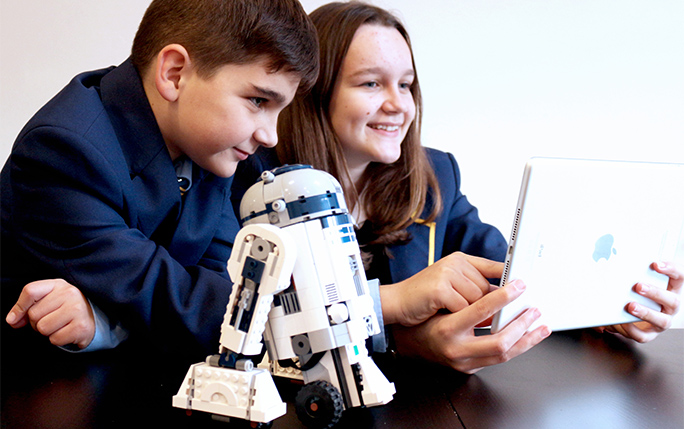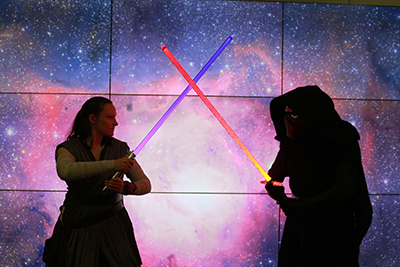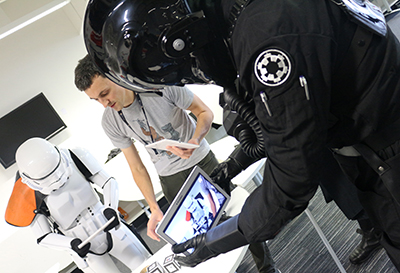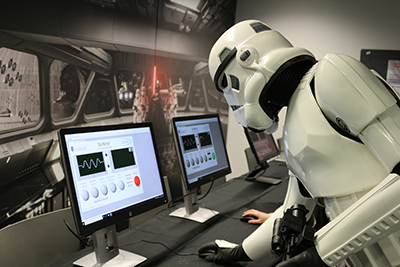Introducing cutting-edge accelerator science to school children

Public engagement lies at the heart of the University of Liverpool's Quantum Systems and advanced Accelerator Research (QUASAR) Group. Their wide-ranging outreach activities take an imaginative approach to make the benefits of accelerator research fascinating and understandable.
Accelerator research is of great value to science, society and industry, but this technology does not traditionally feature in mainstream media, nor is it part of school curricula. The Group’s outreach activities and strategic communication have engaged millions of people around the globe, improving public awareness about particle accelerators and their applications.
Several AVA Fellows took part in the innovative ‘Physics of Star Wars’ events in the past years using the light and dark side of the Force in Star Wars as opportunity to talk about matter and antimatter interactions which the AVA network is exploring.
The event participants learned about how antimatter particles are trapped and prepared for precision experiments via optical and mechanical Paul traps and the AVA Fellows explained how they study the detailed properties of these exotic particles, for example how they react to the gravitational field of the Earth and how they interact with matter particles.
Building on the success of the ‘Physics of Star Wars’ events, the QUASAR Group recently published three articles in Science in School Issue 54 and Issue 55 to support teachers in the delivery of their STEM curricula and to introduce cutting-edge accelerator science to school students. The articles first give a general introduction to accelerator science, before moving to the use of augmented reality to explain a number of frequently used concepts and proton beam therapy as one of the main societal applications of accelerators.

Issue 54 - Inspire article: The physics of Star Wars: introducing accelerator science
Science fiction can be an engaging starting point for scientific discussions. Learn how one research group is using Star Wars to introduce students to accelerator science.
https://www.scienceinschool.org/article/2021/the-physics-of-star-wars/

Issue 54 - Teach Article: Build your own virtual accelerator
Build your own virtual particle accelerator with the aid of the acceleratAR app and gain a hands-on, immersive understanding of how these machines work.
https://www.scienceinschool.org/article/2021/build-your-own-virtual-accelerator/

Issue 55 - Understand Article: Death Star or cancer tumour: proton torpedoes reach the target
A real-life version of proton torpedoes, popularized in Star Wars, offer an alternative to radiotherapy for the treatment of cancer.
https://www.scienceinschool.org/article/2021/proton-torpedoes-reach-the-target/
Science in School is published and funded by EIROforum, a collaboration between eight of Europe’s largest inter-governmental scientific research organizations. The journal is a non-profit project and is hosted by the European Molecular Biology Laboratory (EMBL) in Heidelberg, Germany.
The journal supports science teaching across Europe and across disciplines: highlighting the best in teaching and cutting-edge research. The contents include classroom experiments and teaching materials, up-to-date information on cutting-edge science and real-world applications, projects in science education, and other useful resources for science teachers.
By sharing these teaching resources through Science in School, the QUASAR Group hopes that more teachers will incorporate Star Wars into physics teaching and that many more pupils will be inspired to expand their knowledge about accelerator science.